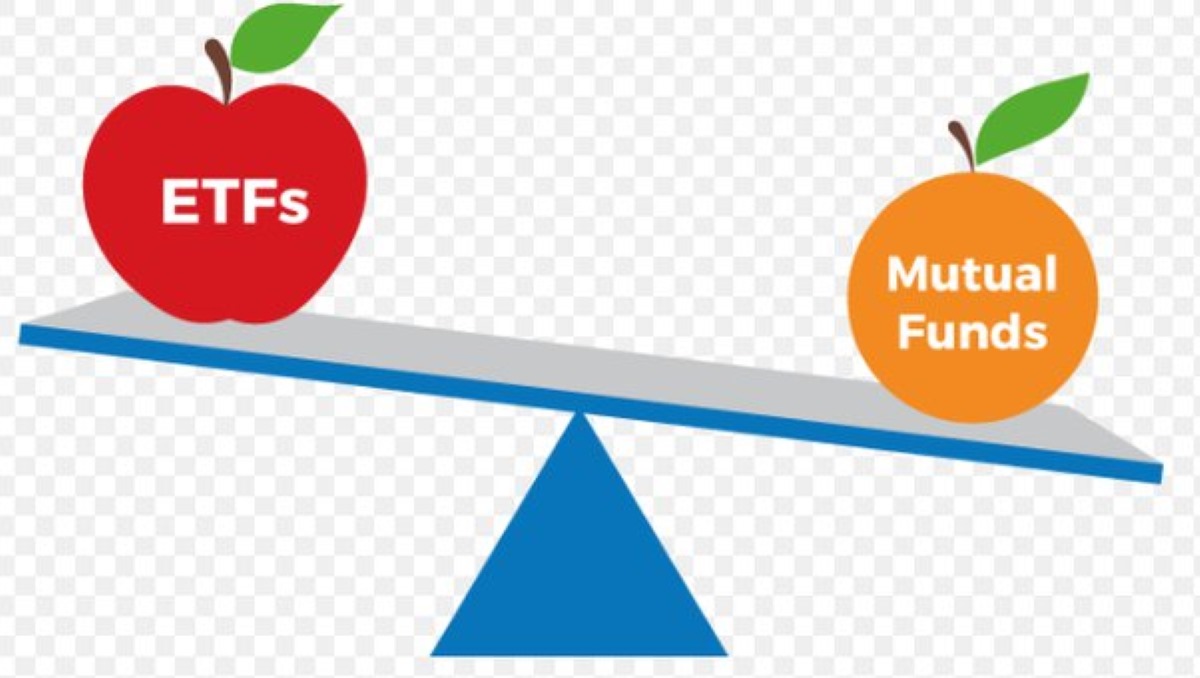Home>Finance>How Are Mutual Funds Money Market Funds And Pension Funds Similar? How Are They Different?


Finance
How Are Mutual Funds Money Market Funds And Pension Funds Similar? How Are They Different?
Published: January 23, 2024
Discover the similarities and differences between mutual funds, money market funds, and pension funds in the world of finance. Gain insights into their unique features and investment opportunities.
(Many of the links in this article redirect to a specific reviewed product. Your purchase of these products through affiliate links helps to generate commission for LiveWell, at no extra cost. Learn more)
Table of Contents
Introduction
Understanding the World of Investment Funds
Investing in the financial market offers a plethora of opportunities for individuals to grow their wealth. Among the myriad options available, mutual funds, money market funds, and pension funds stand out as popular choices for investors seeking to diversify their portfolios and achieve long-term financial goals. These investment vehicles play a pivotal role in the financial landscape, each offering unique features and benefits.
As we delve into the similarities and differences among mutual funds, money market funds, and pension funds, it’s essential to grasp the fundamental principles that underpin these investment instruments. By gaining a comprehensive understanding of these funds, investors can make informed decisions that align with their financial objectives and risk tolerance.
Join us on an insightful journey as we explore the distinct characteristics, similarities, and differences that define mutual funds, money market funds, and pension funds. By the end of this exploration, you’ll have a nuanced understanding of how these investment vehicles operate and how they can potentially contribute to your financial well-being.
Overview of Mutual Funds
Mutual funds represent a collective investment vehicle that pools money from numerous investors to purchase a diversified portfolio of stocks, bonds, or other securities. This pooling of resources allows individual investors to access a professionally managed and diversified investment portfolio, which may otherwise be challenging to achieve independently. Mutual funds are managed by professional fund managers who make strategic investment decisions on behalf of the fund’s investors.
One of the key attractions of mutual funds is their ability to offer diversification, as they typically hold a wide range of securities across various asset classes and industries. This diversification helps mitigate risk by spreading investments across different holdings, potentially reducing the impact of a decline in any single security. Additionally, mutual funds provide investors with liquidity, allowing them to buy or sell fund shares at the end of each trading day based on the fund’s net asset value (NAV).
Investors can choose from a myriad of mutual fund types, including equity funds, bond funds, money market funds, index funds, and more, each tailored to specific investment objectives and risk profiles. Mutual funds are a popular choice for both novice and seasoned investors due to their accessibility, professional management, and potential for long-term capital appreciation.
Overview of Money Market Funds
Money market funds are a type of mutual fund that focuses on providing investors with a secure and stable investment option. These funds invest in short-term, high-quality, fixed-income securities such as Treasury bills, certificates of deposit, and commercial paper. The primary objective of money market funds is to preserve capital while generating modest returns through interest income.
Investors are drawn to money market funds for their emphasis on capital preservation and liquidity. These funds are known for their stability and low levels of risk, making them an attractive choice for investors seeking a safe haven for their cash reserves. Money market funds aim to maintain a stable net asset value (NAV) of $1 per share, making them a reliable option for parking cash and earning a modest return while retaining easy access to funds.
Furthermore, money market funds are often utilized as a temporary parking place for funds between investments or as a component of a diversified investment strategy. They offer a compelling alternative to traditional savings accounts, with the potential for slightly higher yields while maintaining a high degree of safety and liquidity.
Given their focus on stability and liquidity, money market funds are a valuable tool for investors looking to balance risk and return within their investment portfolios. They serve as a crucial component of a well-rounded investment strategy, providing a secure avenue for preserving capital and accessing funds when needed.
Overview of Pension Funds
Pension funds, also known as superannuation funds in some regions, are a type of investment fund specifically designed to provide retirement benefits for employees. These funds are established by employers or industry associations to accumulate and invest contributions made by employees and employers over the course of the employees’ careers. The accumulated funds are then utilized to provide retirement income to employees once they reach the stipulated retirement age.
Pension funds play a critical role in ensuring financial security for retirees by creating a structured and sustainable source of income during their post-employment years. The investment strategies employed by pension funds are geared towards generating long-term growth and income to support retirees throughout their retirement years.
One distinguishing feature of pension funds is their long-term investment horizon, allowing them to allocate a significant portion of their portfolios to equities, fixed-income securities, real estate, and other assets with the potential for capital appreciation and income generation over extended periods. This long-term approach aims to balance the need for capital preservation with the goal of achieving substantial returns to sustain pension payments over the long term.
Furthermore, pension funds are subject to regulatory oversight and fiduciary responsibilities to ensure that the funds are managed prudently and in the best interests of the beneficiaries. This oversight helps safeguard the retirement savings of employees and ensures that the pension fund assets are managed with the utmost diligence and professionalism.
Overall, pension funds serve as a cornerstone of retirement planning, providing a reliable and structured means for employees to accumulate savings and secure a dependable income stream during their retirement years. Their emphasis on long-term growth and income generation underscores their significance in supporting individuals as they transition into retirement.
Similarities Among Mutual Funds, Money Market Funds, and Pension Funds
While mutual funds, money market funds, and pension funds serve distinct purposes within the realm of investment and retirement planning, they share several fundamental similarities that underscore their significance in the financial landscape.
- Professional Management: All three types of funds are managed by experienced investment professionals who make strategic decisions to optimize returns and manage risk on behalf of the fund’s investors or beneficiaries. This expertise helps ensure that the funds are prudently managed to achieve their respective objectives.
- Diversification: Each fund type emphasizes the importance of diversification in its investment strategy. Mutual funds achieve diversification by holding a mix of securities across various asset classes, money market funds focus on a diversified portfolio of short-term, high-quality fixed-income securities, and pension funds diversify their holdings across equities, fixed-income assets, and other investment vehicles to achieve long-term growth and income generation.
- Regulatory Oversight: Mutual funds, money market funds, and pension funds are subject to regulatory oversight to ensure compliance with industry standards and to protect the interests of investors and beneficiaries. This oversight helps instill confidence in the integrity and transparency of these investment vehicles.
- Investor Participation: All three fund types allow individual investors to participate in professionally managed investment strategies that may otherwise be challenging to implement independently. This democratization of investment opportunities enables a broader segment of the population to access diversified portfolios and retirement savings vehicles.
- Income Generation: Each fund type aims to generate income for its participants, whether through capital appreciation, interest income, or dividend payments. This common objective underscores the role of these funds in facilitating wealth accumulation and retirement planning.
These shared characteristics highlight the essential role that mutual funds, money market funds, and pension funds play in providing investors and retirees with access to professionally managed, diversified investment options that align with their financial goals and risk tolerance.
Differences Among Mutual Funds, Money Market Funds, and Pension Funds
While mutual funds, money market funds, and pension funds exhibit similarities in their emphasis on professional management, diversification, regulatory oversight, investor participation, and income generation, they also possess distinct characteristics that set them apart in terms of their primary objectives, investment strategies, and target beneficiaries.
- Primary Objectives: Mutual funds are designed to provide investors with opportunities for long-term capital appreciation and income generation through a diversified portfolio of stocks, bonds, or other securities. Money market funds, on the other hand, focus on preserving capital and providing liquidity through short-term, high-quality fixed-income securities. Pension funds are structured to accumulate and invest contributions to provide retirement benefits for employees.
- Investment Strategies: Mutual funds typically adopt a growth-oriented investment strategy, aiming to achieve capital appreciation over the long term. Money market funds prioritize stability and liquidity, investing in low-risk, short-term instruments to preserve capital and generate modest returns. Pension funds pursue a balanced investment approach, allocating assets across equities, fixed-income securities, and other investments to support long-term growth and income generation for retirement benefits.
- Target Beneficiaries: Mutual funds cater to individual investors seeking to grow their wealth and achieve specific financial goals. Money market funds are suitable for investors looking to preserve capital and maintain liquidity for short-term cash management. Pension funds are established to support employees’ retirement needs by accumulating and investing contributions to provide retirement income.
- Access and Liquidity: Mutual funds offer daily liquidity, allowing investors to buy or sell shares at the end of each trading day based on the fund’s net asset value. Money market funds also provide high levels of liquidity, allowing investors to access their funds promptly. Pension funds, however, are designed for long-term savings and have restrictions on withdrawals to ensure the availability of retirement benefits for employees upon reaching retirement age.
- Regulatory Framework: While all three fund types are subject to regulatory oversight, the specific regulations and guidelines governing mutual funds, money market funds, and pension funds may vary based on their distinct purposes and the nature of their underlying investments.
These differences underscore the unique roles and characteristics of mutual funds, money market funds, and pension funds, highlighting the diverse array of investment options and retirement planning vehicles available to individuals and organizations seeking to achieve their financial objectives.
Conclusion
Exploring the dynamic landscape of mutual funds, money market funds, and pension funds reveals a rich tapestry of investment options and retirement planning vehicles that cater to diverse financial needs and objectives. While these funds share common elements such as professional management, diversification, regulatory oversight, investor participation, and income generation, their unique characteristics and objectives set them apart, enabling investors and employees to tailor their investment and retirement strategies to align with their specific requirements.
Mutual funds stand out as versatile investment vehicles that offer a broad spectrum of options, allowing investors to pursue long-term capital appreciation and income generation through a professionally managed and diversified portfolio of securities. Money market funds, on the other hand, provide a secure haven for investors seeking stability and liquidity, with an emphasis on preserving capital and accessing funds promptly when needed. Meanwhile, pension funds serve as pillars of retirement planning, accumulating and investing contributions to provide employees with a reliable source of income during their post-employment years.
As investors and individuals plan for their financial futures, the availability of these distinct fund types empowers them to craft well-rounded investment portfolios and retirement savings strategies that cater to their risk tolerance, time horizon, and long-term financial aspirations. By understanding the nuances of mutual funds, money market funds, and pension funds, individuals can make informed decisions that align with their unique financial goals and circumstances, fostering confidence and security in their investment and retirement planning endeavors.
Ultimately, the diverse array of mutual funds, money market funds, and pension funds reflects the multifaceted nature of the financial market, offering a spectrum of opportunities for wealth accumulation, capital preservation, and retirement security. By leveraging these investment vehicles effectively, individuals and organizations can navigate the complexities of the financial landscape and work towards achieving enduring financial well-being and stability.














